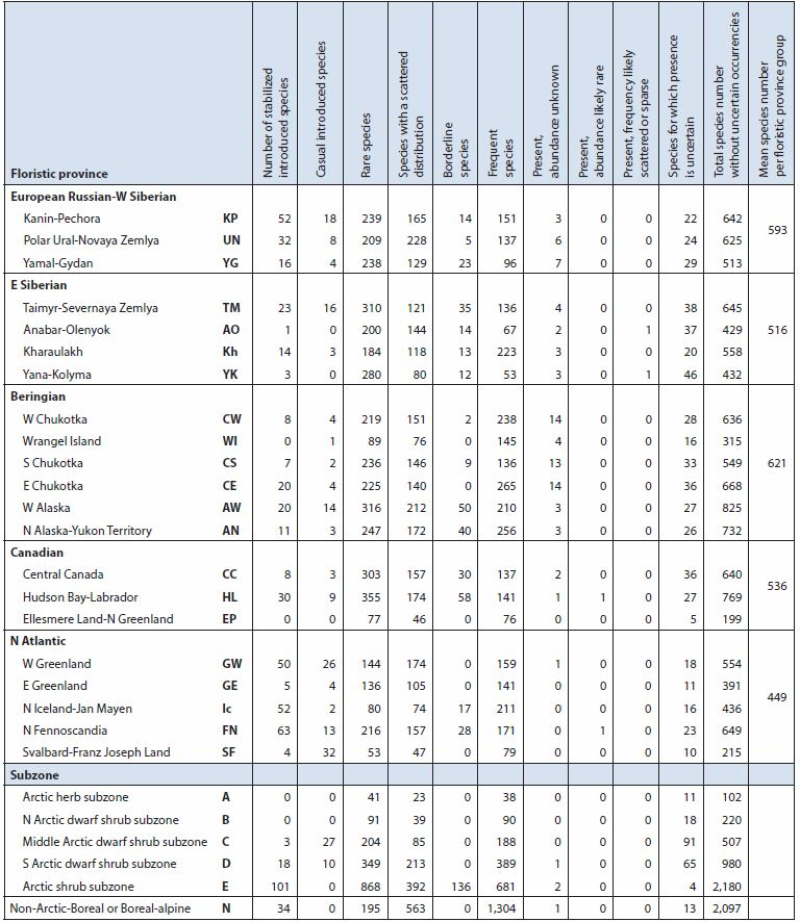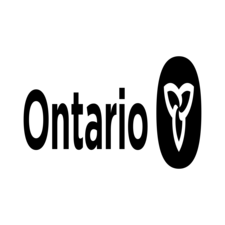forests
Type of resources
Available actions
Topics
Keywords
Contact for the resource
Provided by
Formats
Representation types
Update frequencies
status
Scale
-

Summary of Arctic vascular plant species and distribution by Arctic flora province and subzone based on Elven (2007). Arctic floristic provinces, subzones (A-E), neighbouring boreal or boreal-alpine zone (N) and distribution derived from Elven (2007). Arctic Biodiversity Assessment - Table 9.1 Conservation of Arctic Flora and Fauna, CAFF 2013 - Akureyri . Arctic Biodiversity Assessment. Status and Trends in Arctic biodiversity. - Plants(Chapter 9) page 321
-

Spatial location of all harvesting identified in the first 10 years of 2012 Forest Management Plans for Crown timber licenses. Blocks are identified by broad treatment category and by the period (2012-2016 and 2017-2022) they are available for harvest.
-

The spatial representation for a Natural Resource Area. An NR AREA is an amalgamation of all NR Regions within the supplied boundaries and acts as an administrative area to these regions as established by the Ministry. This dataset supersedes WHSE_ADMIN_BOUNDARIES.NRO_ADM_AREAS_SP
-

The spatial representation for a Natural Resource (NR) Region, that is an administrative area established by the Ministry, within NR Areas. These boundaries are designated by the Lieutenant Governor in council and published as regulations which establishes the Ministry's management areas. This dataset supersedes WHSE_ADMIN_BOUNDARIES.FADM_REGION
-

The spatial representation for a Natural Resource (NR) District, that is an administrative area established by the Ministry, within NR Regions.
-

The digital atlas contains distribution information of dominant forest plants, species assemblages (vegetation types), and some habitat and structural characteristics for the eco-district 6e10 and Greater Park Ecosystem (GPE) — St. Lawrence Islands National Park. We used statistical modeling and prediction to make the distributional information for the entire study area. We extrapolated information from geo-referenced vegetation data collected during summers from 2005 to 2007 with other spatial layers, such as digital elevation and remote sensing derivatives. The maps are in raster (grid) format at a 10m resolution. You can navigate them by following the documents and readme files in the individual folders or in the main document folder called ‘6e10_documents’. In southern Ontario, there is a lack of current ‘wall-to wall’, fine-scale, vegetation class and species vegetation mapping to support diverse applications and initiatives related to natural resource management, conservation and landscape and land-use planning. These maps could serve as baseline information for: * natural heritage design and planning * Species at Risk (SAR) recovery planning * state of biodiversity reporting * forest management and planning * invasive species management * ecological goods and services estimates * wildlife habitat modeling and mapping * additional applications and research techniques * requiring mapped vegetation information __How to reference this dataset__ This product should be referenced as: Puric-Mladenovic, Danijela, Julia Buck; David Bradley, Robert Arends, Silvia Strobl, and Nayna Khalatkar (2008). _Digital atlas of predicted species distributions, vegetation assemblages and habitat characteristics for the eco-district 6e10 and GPE — St. Lawrence Islands National Park’_, version 1.0.. Information Management and Spatial Analysis Unit, Southern Science and Information Section, OMNR, Peterborough, Ontario. __Additional time period information__ Field sampling was collected during the summer months from 2005 to 2007. The following activities took place during 2008: * spectral and environmental data assembly * predictive modelling and mapping Alternate title: Plant atlas for St. Lawrence Islands National Park
-

Canadian forest management has multiple goals and varies in intensity. Governments, forest companies, Indigenous peoples, communities, and many other stakeholders are all involved in the forest management planning process. Management goals and the plans developed by professional foresters to achieve these goals differ from place to place. Canadian forests are often grouped into two categories: managed forest and unmanaged forest. This type of classification is sometimes useful, but the reality is much more complex and interesting. This interactive story map provides information on designations, ownership, forest tenures, and land protection statuses, and provides a comprehensive picture of the geography of Canada's managed forests. It has been updated from an earlier version to show land designations in 2020. **This third party metadata element was translated using an automated translation tool (Amazon Translate).**
-

<a href="http://caff.is/strategies-series/359-the-alaska-yukon-region-of-the-circumboreal-vegetation-map-cbvm" target="_blank"> <img width="150px" height="150px" alt="logo" align="left" hspace="10px" src="http://geo.abds.is/geonetwork/images/flora_logo.png"> </a>A map of boreal vegetation for the Alaska-Yukon region was developed to contribute to the circumboreal vegetation mapping (CBVM) project. The effort included developing a map of bioclimates with 12 bioclimate zones, a map of biogeographic provinces with Alaska-Yukon and Aleutian provinces, and a map of geographic sectors with six sectors that provided the basis for classification of boreal vegetation. Vegetation mapping was done at 1:7.5 million scale using the mapping protocols of the CBVM team. Mapping used MODIS imagery as the basis for manual image interpretation and an integrated-terrain-unit approach, which included classifications for bioclimate, physiography, generalized geology, permafrost, disturbance, growth from, geographic sector, and vegetation. Vegetation was mapped at two hierarchical levels: (1) formation group differentiating zonal and azonal systems; and (2) geographic sectors based on bioclimatic zonation and dominant species that characterize broad longitudinal regions or biogeographic provinces. Each of the 19 map units was described by identifying the dominant and characteristic species and its climatic and landscape characteristics, as well as references that relate to the unit.
-

A national map of Canadian Fire Behaviour Prediction (FBP) Fuel Types (FT) developed from public data sources. The resolution of the raster grid is 30m, classified from the Spatialized Canadian National Forest Inventory (SCANFI) dataset, ecozones of Canada, and the National Burned Area Composite (NBAC). The purpose of the dataset is to characterize Canadian forests into fuel types for use in Fire Behaviour Prediction calculations as well as for situational awareness of national fire potential.
-

Statistics on changes in forest management in Canada in 2017 and 2020. This page provides statistics on forest management in Canada in 2017 and 2020 and is part of the Story Map of Forest Management in Canada, 2020. **This third party metadata element was translated using an automated translation tool (Amazon Translate).**
 Arctic SDI catalogue
Arctic SDI catalogue